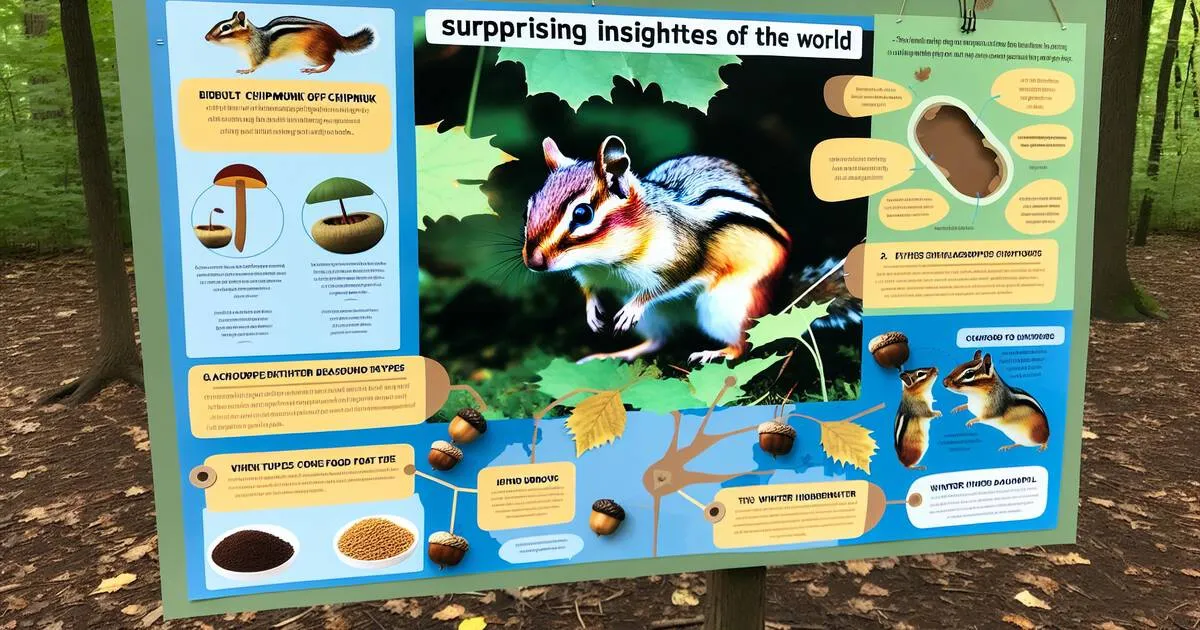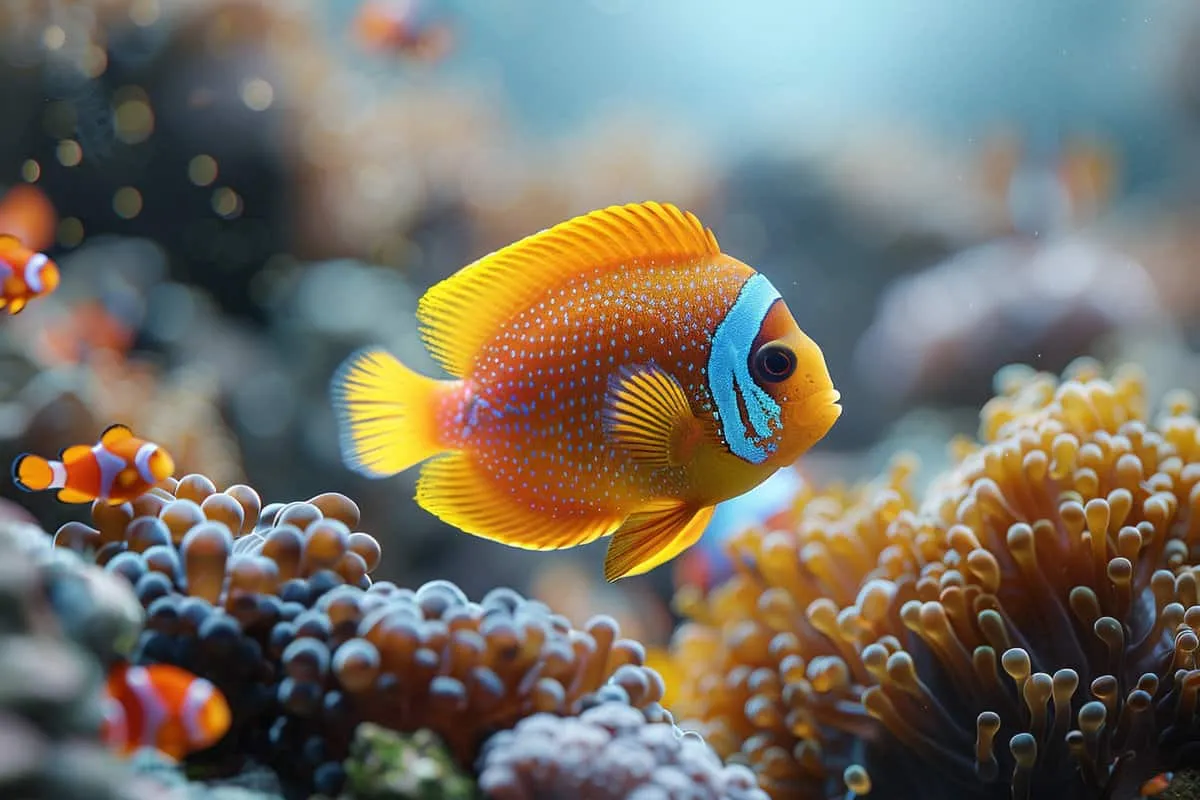Chipmunk Facts: Surprising Insights into Their World
Chipmunks, those adorable little creatures with their cheeky faces and striped backs, are more than just cute. They’re fascinating! From their unique behaviors to surprising survival skills, there’s a lot hidden beneath those bushy tails that we often overlook. These tiny critters hold secrets of the wild that will astonish even the most seasoned nature enthusiasts. If you thought you knew everything about chipmunks, think again. We’ve dug up some incredible facts that will make you see these furry friends in a whole new light. So, if you’re eager to uncover the wonders of chipmunks, scroll down for a revelation of our top picks!
Chipmunks Are Part of the Squirrel Family
Chipmunks are cute, small creatures that share a family tree with squirrels. They belong to the Sciuridae family, which might sound like a fancy name, but it simply means they’re relatives of squirrels. However, chipmunks are smaller in size compared to their squirrel cousins.
One of the most noticeable things about chipmunks is their distinctive stripes. These aren’t just for show; they help chipmunks blend into their surroundings and stay safe from predators. Imagine wearing a striped outfit that makes you almost invisible in your backyard; that’s how chipmunks use their stripes in nature!
Despite being small—usually measuring between 4 to 7 inches long—chipmunks play a big role in the ecosystem. They feast on various foods including seeds, nuts, fruits, and even insects. This diet helps control insect populations and spreads seeds from trees and plants they consume.
The term “chipmunk” itself brings images of these energetic animals stuffing food into their cheeks. Their cheek pouches allow them to carry food back to their burrows where they store it for later use.
There Are 25 Recognized Species of Chipmunks
Chipmunks are not just one kind; there are actually 25 different species! This diversity is mainly seen across various habitats, showing how adaptable these little creatures can be. Most of these species have made their home in North America. From the dense forests to suburban backyards, chipmunks have become a common sight for many.
Interestingly, while North America is bustling with various chipmunk species, Asia has only one – the Siberian chipmunk. This lone species found outside of North America shows how unique each habitat is and how certain animals adapt to specific environments.
The variety among these 25 different species includes differences in size, color patterns, and behaviors. Some might prefer nesting on the ground while others find safety up in the trees. Despite their small size, this diversity plays a significant role in their survival strategies against predators and changing climates.
Chipmunks Have Cheek Pouches for Food Storage
Imagine being able to carry groceries equal to your weight without using a cart. That’s what chipmunks do with their cheek pouches! These small, cute creatures can fill their cheeks with food that weighs as much as they do. This is not just any food; we’re talking about nuts, seeds, and even the occasional bug.
Why do they need so much food in their mouths? It’s all about preparation. Chipmunks use these handy pouches to transport food back to their burrows. Once there, they stash it away carefully. This isn’t just hoarding for the sake of it; this behavior is crucial for survival. When winter rolls around, and the ground is covered in snow, those brown stripes on a chipmunk aren’t just for show—they signal a well-prepared creature that won’t go hungry.
The ability to store and transport large amounts of food is essential during colder months when resources are scarce. Imagine having your pantry filled without needing to step outside into the cold—that’s exactly what these cheek pouches allow chipmunks to achieve!
They Are Mostly Found in North America
Chipmunks are little creatures that love to live in forests and woodlands across North America. They find these places perfect because there are lots of trees, bushes, and leaves where they can hide, play, and look for food. When fall comes around, these areas give them plenty of seeds and nuts to store for the winter.
But it’s not just the wild forests where you’ll find chipmunks; some have learned to call urban areas their home too. Yes, even in big cities with fewer trees and more buildings! These smart little animals adapt by finding new kinds of shelters and different foods to eat. It shows just how clever they are at making any place a comfortable home.
However, if you were hoping to see chipmunks outside North America or Europe (where the Siberian chipmunk lives), you’d be out of luck. Chipmunks are mostly found in North America because it has the right kind of habitats they need – from dense forests to your own backyard!
The only exception is the Siberian chipmunk which has made parts of Europe its home after being introduced there by humans. But overall, if you’re looking for these furry friends in their natural setting, North America’s diverse environments offer them everything they need.
Chipmunks Are True Hibernators
Chipmunks take winter sleep to a whole new level. Unlike some animals that just slow down, chipmunks enter a state of deep sleep known as hibernation during the cold months. This isn’t your average nap; their body temperature drops significantly, making them seem almost lifeless.
During this period, they’re not just sleeping away the winter. Chipmunks wake up periodically for a very important task: eating. Before winter hits, they work hard to gather and store food in their burrows—think of it like stocking up their pantry. These stores are vital because even though they’re hibernating, they need energy to survive.
What’s fascinating is how their body manages this process. When it’s time to eat, their body temperature slowly rises back to normal so they can wake up and munch on the food they’ve stored away in logs and other hiding spots around their home.
This cycle of sleeping deeply then waking briefly continues throughout the entire winter until spring arrives with warmer temperatures.
Their Diet Is Omnivorous
Chipmunks are not picky eaters. They enjoy a wide range of foods, making their diet quite interesting. At the core, they’re omnivores, which means they can eat both plants and animals.
-
Seeds and Nuts: These are staples in a chipmunk’s diet. Whether it’s sunflower seeds or acorns, chipmunks have a special liking for these crunchy snacks.
-
Fruits: Chipmunks also munch on various fruits when available. This could include berries found in their natural habitats or pieces of fruit from nearby human habitation.
-
Insects: For protein, chipmunks turn to insects. From small beetles to caterpillars, these tiny creatures provide essential nutrients.
Interestingly enough, chipmunks’ diets can also include small birds or eggs if they find them accessible. This might be surprising but showcases their adaptability as predators when needed.
The variety in their food choices changes with the seasons and what’s available around them. During spring and summer, fresh fruits and insects are more common in their diet due to availability; whereas nuts and seeds become crucial during fall as they prepare for winter by foraging and storing food.
This versatility helps them survive across different environments – from forests to urban areas – adapting to whatever food sources are present.
Chipmunks Use Vocalizations and Body Language to Communicate
Chipmunks are not just cute; they’re quite the chatterboxes too. They use a variety of sounds like chirps and trills. These aren’t random noises but have specific meanings. A chipmunk might emit a sharp chirp when it senses danger, alerting others nearby to take cover. During mating season, these vocalizations turn into more complex trills as they try to attract partners.
But their communication isn’t limited to just sounds. Their body language speaks volumes too! Tail movements are particularly expressive among chipmunks. If you see one flicking its tail rapidly, it could be signaling aggression or warning others of potential threats. On the flip side, a slow, cautious tail movement might indicate fear or submission.
Have you ever noticed how expressive their little faces can be? That’s right; facial expressions are also part of their communication toolkit. A relaxed face with calm eyes usually means the chipmunk feels safe and content in its environment, while narrowed eyes could suggest annoyance or suspicion towards another creature.
They Can Live Up to 8 Years in Captivity
Chipmunks in the wild face a lot of dangers. Predators are everywhere, looking for their next meal. This makes life tough for these little creatures. Because of this, they don’t live very long outside.
But, when chipmunks are kept in captivity, things change for them. Here, they get care and protection from many threats including diseases and bad weather. This safe environment helps them live much longer.
The lifespan isn’t the same for all chipmunk species though. Some might live a bit less or more than others but getting up to eight years is possible with good care.
In captivity, chipmunks have dens that keep them warm and safe. People who take care of them make sure they eat well and stay healthy throughout the seasons.
Wild chipmunks also have dens but have to look out for danger every day which can be stressful and reduce their lifespan significantly.
Here’s a quick look at how living conditions affect their lives:
- Wild: Shorter life due to predators.
- Captivity: Longer life thanks to care and protection from diseases and harsh weather.
Chipmunks Play a Vital Role in Seed Dispersal
Chipmunks are like nature’s forgetful gardeners. They gather seeds and berries in the spring and summer, planning to eat them later. But, they often forget where they’ve buried their stash. This means those hidden seeds get a chance to grow into new plants.
By doing this, chipmunks help forests grow back after being cleared or damaged. When trees fall or fires happen, it’s tough for the forest to fix itself without some help. Chipmunks provide that help by spreading seeds around.
This seed-spreading job also makes our forests full of different kinds of plants. More variety means more types of bugs, birds, and animals can live there because there’s something for everyone to eat or use as shelter.
Here’s how chipmunks contribute:
- Unintentionally Plant Seeds: Their forgotten caches sprout into new growth.
- Forest Regeneration: These small creatures play a big part in helping wooded areas recover from damage.
- Biodiversity Boost: By moving seeds around, they spread flora far and wide, increasing plant diversity.
The Eastern Chipmunk Is the Largest Species
The Eastern Chipmunk stands out as the largest species among its kin. This little creature can stretch up to 11 inches long if you include its tail in the measurement. Imagine a pencil or a small ruler; that’s about how long they are!These chipmunks are on the heavier side for their family, tipping the scales at 3-4 ounces once they reach adulthood.
What makes them even more special is their appearance. The Eastern Chipmunk boasts a bold striping pattern that sets it apart from other types. These stripes aren’t just for show; they help chipmunks blend into their surroundings, keeping them safe from predators.
Living mainly in forests and wooded areas across North America, these creatures have adapted well to their environment. Their size and distinctive markings play crucial roles in their survival tactics, allowing them to hide from threats and store food efficiently for winter months.
Frequently Asked Questions
How many species of chipmunks are there?
There are 25 recognized species of chipmunks. It’s like discovering a new flavor in a huge box of chocolates, each one unique and exciting.
Are chipmunks part of the squirrel family?
Yes, they are! Chipmunks belong to the squirrel family. Think of them as the cute little cousins in the vast squirrel clan.
What do chipmunks use their cheek pouches for?
Chipmunks use their cheek pouches to store food. Imagine using your cheeks as grocery bags – pretty handy, right?
Where can you mostly find chipmunks?
They’re mostly found in North America. Picture them as tiny adventurers exploring forests and backyards across the continent.
Do chipmunks hibernate?
Absolutely! Chipmunks are true hibernators, snoozing away winter like they’re hitting the snooze button on an alarm clock until spring.
What is a typical diet for a chipmunk?
Their diet is omnivorous. They’re not picky eaters at all, munching on both plants and small critters much like we might enjoy both veggies and meat.
How do chipmunks communicate with each other?
Chipmunks use vocalizations and body language to chat it up. Imagine them gossiping about forest news or where to find the best seeds.







